Description
Larger than a standard “351” style pick.
William Clark Gable (February 1, 1901 – November 16, 1960) was an American film actor and military officer, often referred to as “The King of Hollywood” or just simply as “The King”. Gable began his career as a stage actor and appeared as an extra in silent films between 1924 and 1926, and progressed to supporting roles with a few films for Metro-Goldwyn-Mayer in 1931. The next year, he landed his first leading Hollywood role and over the next three decades he became a leading man in more than 60 motion pictures.
Gable won an Academy Award for Best Actor for It Happened One Night (1934), and was nominated for leading roles in Mutiny on the Bounty (1935) and for his arguably best-known role as Rhett Butler in the epic Civil War drama Gone with the Wind (1939).
Gable also found success commercially and critically with films such as Red Dust (1932), Manhattan Melodrama (1934), San Francisco (1936), Saratoga (1937) Boom Town (1940), The Hucksters (1947), Homecoming (1948), and The Misfits (1961), which was his final screen appearance.
Gable appeared opposite some of the most popular actresses of the time. Joan Crawford was his favorite actress to work with, and she was partnered with Gable in eight films. Myrna Loy worked with him seven times, and he was paired with Jean Harlow in six productions. He also starred with Lana Turner in four features, and with Norma Shearer and Ava Gardner in three each. Gable’s final film, The Misfits (1961), united him with Marilyn Monroe (also in her last screen appearance). Gable is considered one of the most consistent box-office performers in history, appearing on Quigley Publishing’s annual Top Ten Money Making Stars Poll 16 times. He was named the seventh-greatest male star of classic American cinema by the American Film Institute.
William Clark Gable was born in Cadiz, Ohio, to William Henry “Will” Gable (1870–1948), an oil-well driller, and his wife, Adeline (née Hershelman; 1869–1901). His father was a Protestant and his mother a Roman Catholic. Gable was named William after his father, but even in childhood, he was almost always called Clark or sometimes Billy. He was mistakenly listed as a female on his birth certificate. Among Gable’s ancestors were Pennsylvania Dutch (German), Belgians, Rhinelanders, and Bavarians.
When Gable was six months old, he was baptized at a Roman Catholic church in Dennison, Ohio. His mother died when he was ten months old, possibly from a brain tumor, although the official cause of death was given as an epileptic fit. William Gable refused to raise his son Catholic, which provoked criticism from the Hershelman family. The dispute was resolved when Will Gable agreed to allow his son to spend time with his maternal uncle, Charles Hershelman, and his wife on their farm in Vernon Township, Pennsylvania.
In April 1903, Gable’s father married Jennie Dunlap (1874–1919), whose family came from the small neighboring town of Hopedale. The marriage produced no children. Gable was a tall, shy child with a loud voice. His stepmother raised him to be well-dressed and well-groomed. Jennie played the piano and gave her stepson lessons at home. Later he took up brass instruments. At 13, he was the only boy in the men’s town band. He was very mechanically inclined and loved to strip down and repair cars with his father. Although his father insisted on Gable doing “manly” things, like hunting and hard physical work, Gable loved language. Among trusted company, he would recite Shakespeare, particularly the sonnets.
Will Gable agreed to buy a 72-volume set of The World’s Greatest Literature to improve his son’s education, but claimed he never saw his son use it. In 1917, when Gable was in high school, his father had financial difficulties. Will decided to settle his debts and try his hand at farming, and the family moved to Ravenna, Ohio, near Akron. Despite his father’s insistence that he work the farm, Gable soon left to work in Akron for the Firestone Tire and Rubber Company.
At 17, Clark Gable was inspired to be an actor after seeing the play The Bird of Paradise, but he was not able to make a real start until he turned 21 and inherited some money.
By then, his stepmother had died, and his father moved to Tulsa, Oklahoma to go back to the oil business. Gable toured in stock companies, as well as working the oil fields and as a horse manager. He found work with several second-class theater companies, thus making his way across the Midwest to Seaside, Oregon, working as a logger, and to Portland, Oregon, where he worked as a necktie salesman in the Meier & Frank department store. In Portland, he met Laura Hope Crews, a stage and film actress, who encouraged him to return to the stage with another theater company. Twenty years later, Crews played Aunt Pittypat alongside Gable’s Rhett Butler in Gone With the Wind (1939).
Gable’s acting coach, Josephine Dillon — a theater manager in Portland – was 17 years older than him. She paid to have his teeth repaired and his hair styled. She guided him in building up his chronically undernourished body, and taught him better body control and posture. She spent considerable time training his naturally high-pitched voice, which he slowly managed to lower, to gain better resonance and tone. As his speech habits improved, his facial expressions became more natural and convincing. After a long period of training, Dillon considered him ready to attempt a film career.
In 1924, with Dillon’s financing, they went to Hollywood, where she became Gable’s manager and first wife. He changed his stage name from W. C. Gable to Clark Gable. He found work as an extra in such silent films as Erich von Stroheim’s The Merry Widow (1925), The Plastic Age (1925), which starred Clara Bow, Forbidden Paradise (1924), starring Pola Negri, plus a series of two-reel comedies called The Pacemakers. He appeared as an extra in Fox’s The Johnstown Flood (1926). Seventeen-year-old Carole Lombard, later his third wife, also appeared as an extra in that film, although they were not in the same scene. He also appeared as a bit player in a series of shorts.[21]
However, he was not offered any major film roles, so he returned to the stage. He became lifelong friends with Lionel Barrymore, who, despite initially bawling Gable out for what he deemed amateurish acting, urged him to pursue a career on stage. During the 1927–28 theater season, he acted with the Laskin Brothers Stock Company in Houston, Texas, where he played many roles, gained considerable experience, and became a local matinee idol.He then moved to New York City, and Dillon sought work for him on Broadway. He received good reviews in Machinal (1928); “He’s young, vigorous and brutally masculine”, wrote the critic at The Morning Telegraph. The start of talking pictures and the beginning of the Great Depression caused cancellation of many plays in the 1929–30 season, and acting work became harder to get.
In 1930, after his impressive appearance as the seething and desperate character Killer Mears in the Los Angeles stage production of The Last Mile, Gable was offered a contract with Metro-Goldwyn-Mayer. His first role in a sound picture was as the unshaven villain in a low-budget William Boyd Western called The Painted Desert (1931). He received a lot of fan mail as a result of his powerful voice and appearance; the studio took notice.[citation needed]
In 1930, Gable and Josephine Dillon were divorced. A few days later, he married Texas socialite Maria Franklin Prentiss Lucas Langham, nicknamed “Rhea”. After moving to California, they were married again in 1931, possibly due to differences in state legal requirements. “His ears are too big and he looks like an ape”, said executive Darryl F. Zanuck, then at Warner Bros., about Gable after testing him for the lead in the studio’s gangster drama Little Caesar(1931). The same year, in Night Nurse, Gable played a villainous chauffeur who was gradually starving two adorable little girls to death, then knocked Barbara Stanwyck’s character unconscious with his fist, a supporting role originally slated for James Cagney until the release of The Public Enemy abruptly made Cagney a leading man. After several failed screen tests for Barrymore and Zanuck, Gable was signed in 1930 by MGM’s Irving Thalberg. He became a client of well-connected agent Minna Wallis, sister of producer Hal Wallis and a very close friend of Norma Shearer.
Gable’s arrival in Hollywood occurred fortuitously. MGM was looking to expand its stable of male stars and he fit the bill. He first worked mainly in supporting roles, often as the villain. He made two pictures in 1931 with Wallace Beery, a supporting role in The Secret Six, then with his part increasing in size to almost match Beery’s in the naval aviation film Hell Divers. MGM’s publicity manager Howard Strickling developed Gable’s studio image, playing up his he-man experiences and his ‘lumberjack in evening clothes’ persona.
To bolster his increasing popularity, MGM frequently paired him with well-established female stars. Joan Crawford asked for him as her co-star in Dance, Fools, Dance (1931). He built his fame and public visibility in such movies as A Free Soul (1931), in which he played a gangster who shoved the character played by Norma Shearer; Gable never played a supporting role again. The Hollywood Reporter wrote “A star in the making has been made, one that, to our reckoning, will outdraw every other star… Never have we seen audiences work themselves into such enthusiasm as when Clark Gable walks on the screen”. He followed that with Susan Lenox (Her Fall and Rise) (1931) with Greta Garbo, and Possessed (1931), in which Crawford (then married to Douglas Fairbanks, Jr.) and he steamed up the screen. Adela Rogers St. Johns later dubbed Gable and Crawford’s real-life relationship as “the affair that nearly burned Hollywood down”. Louis B. Mayer threatened to terminate both their contracts, and for a while they kept apart. Gable shifted his attentions to Marion Davies. However, Gable and Garbo disliked each other. She thought he was a wooden actor, while he considered her a snob.
Gable was considered for the role of Tarzan in Tarzan the Ape Man, but lost out to Johnny Weissmuller’s more imposing physique and superior swimming prowess. However, Gable’s unshaven lovemaking with braless Jean Harlow in Red Dust (1932) soon made him MGM’s most important male star. After the hit Hold Your Man (1933), MGM recognized the goldmine of the Gable-Harlow pairing, putting them in two more films, China Seas (1935; with Gable and Harlow billed above Wallace Beery) and Wife vs. Secretary (1936) with Myrna Loy and James Stewart. An enormously popular combination, on-screen and off-screen, Gable and Harlow made six films together, the most notable being Red Dust (1932) and Saratoga (1937). Harlow died during production of Saratoga. Ninety percent completed, the remaining scenes were filmed with long shots or the use of doubles like Mary Dees; Gable said that he felt as if he were “in the arms of a ghost”.
According to legend, Gable was lent to Columbia Pictures, then considered a second-rate operation, as punishment for refusing roles; however, this has been refuted by more recent biographies. MGM did not have a project ready for Gable and was paying him $2,000 per week, under his contract, to do nothing. Studio head Louis B. Mayer lent him to Columbia for $2,500 per week, making a $500 per week profit.
Gable was not the first choice to play the lead role of Peter Warne in It Happened One Night (1934). Robert Montgomery was originally offered the role, but he felt that the script was poor. Filming began in a tense atmosphere, but both Gable and director Frank Capra enjoyed making the movie. Gable won the Academy Award for Best Actor for his performance in the film, and the movie won the Academy Award for Best Picture. To Capra, Gable’s character in the film most closely resembled his real personality:
It Happened One Night is the real Gable. He was never able to play that kind of character except in that one film. They had him playing these big, huff-and-puff he-man lovers, but he was not that kind of guy. He was a down-to-earth guy, he loved everything, he got down with the common people. He didn’t want to play those big lover parts; he just wanted to play Clark Gable, the way he was in It Happened One Night,and it’s too bad they didn’t let him keep up with that.
He returned to MGM a bigger star than ever. He received an Academy Award nomination for his portrayal of Fletcher Christian in Mutiny on the Bounty (1935).
Spencer Tracy collaborations[edit]
Gable made three pictures with Spencer Tracy, which boosted Tracy’s career and cemented them in the public mind as a team. San Francisco (1936) featured Tracy in a brief but Oscar-nominated role in which he played a priest who knocks Gable, by then the studio’s foremost leading man, down in a boxing ring. Despite being onscreen for only 17 minutes, the appearance immediately catapulted Tracy, whose career had floundered for years despite delivering superb performances in quality films, into major stardom in the wake of the picture becoming the year’s biggest box-office attraction. Test Pilot (1938) gave Tracy a larger supporting part as the agonizing friend of Gable’s glamorous pilot while Boom Town (1940) depicted an epic rivalry between Gable and Tracy’s characters and their oil businesses. Each pairing was a box-office phenomenon. MGM had teamed Tracy with Gable every two years until Tracy finally insisted upon a star billing clause in his contract, ending any further Gable-Tracy collaborations.
Gone with the Wind[edit]
Despite his reluctance to play the role, Gable is best known for his performance in Gone with the Wind (1939), for which he gained a Best Actor Oscar nomination. Carole Lombard may have been the first to suggest that he play Rhett Butler (and she play Scarlett) when she bought him a copy of the bestseller, which he refused to read.
Butler’s last line in Gone with the Wind, “Frankly, my dear, I don’t give a damn,” is one of the most famous lines in movie history. Gable was an almost immediate favorite for the role of Rhett with both the public and producer David O. Selznick. Since Selznick had no male stars under long-term contract, though, he needed to go through the process of negotiating to borrow an actor from another studio. Gary Cooper was Selznick’s first choice. When Cooper turned down the role of Butler, he was quoted as saying, “Gone With the Wind is going to be the biggest flop in Hollywood history. I’m glad it’ll be Clark Gable who’s falling flat on his nose, not me.” By then, Selznick had become determined to hire Gable, and set about finding a way to borrow him from MGM. Gable was wary of potentially disappointing an audience that had decided that no one else could play the part. He later conceded, “I think I know now how a fly must react after being caught in a spider’s web.”
By all accounts, Gable got along well with his co-stars during filming. Gable was great friends with actress Hattie McDaniel, and he even slipped her a real alcoholic drink during the scene in which they were supposed to be celebrating the birth of Scarlett and Rhett’s daughter. Gable tried to boycott the premiere of Gone with the Wind in Atlanta, Georgia, because the African American McDaniel was not permitted to attend. He reportedly only went after she pleaded with him to go. Gable remained friends with McDaniel, and he always attended her Hollywood parties, especially when she was raising funds during World War II.
Gable did not want to shed tears for the scene after Rhett inadvertently causes Scarlett to miscarry their second child. Olivia de Havilland made him cry, later commenting, “…Oh, he would not do it. He would not! Victor (Fleming) tried everything with him. He tried to attack him on a professional level. We had done it without him weeping several times and then we had one last try. I said, ‘You can do it, I know you can do it and you will be wonderful…’ Well, by heaven, just before the cameras rolled, you could see the tears come up at his eyes and he played the scene unforgettably well. He put his whole heart into it.”
Decades later, Gable said that whenever his career would start to fade, a rerelease of Gone with the Wind would soon revive his popularity, and he continued as a top leading actor for the rest of his life. (Wikipedia)
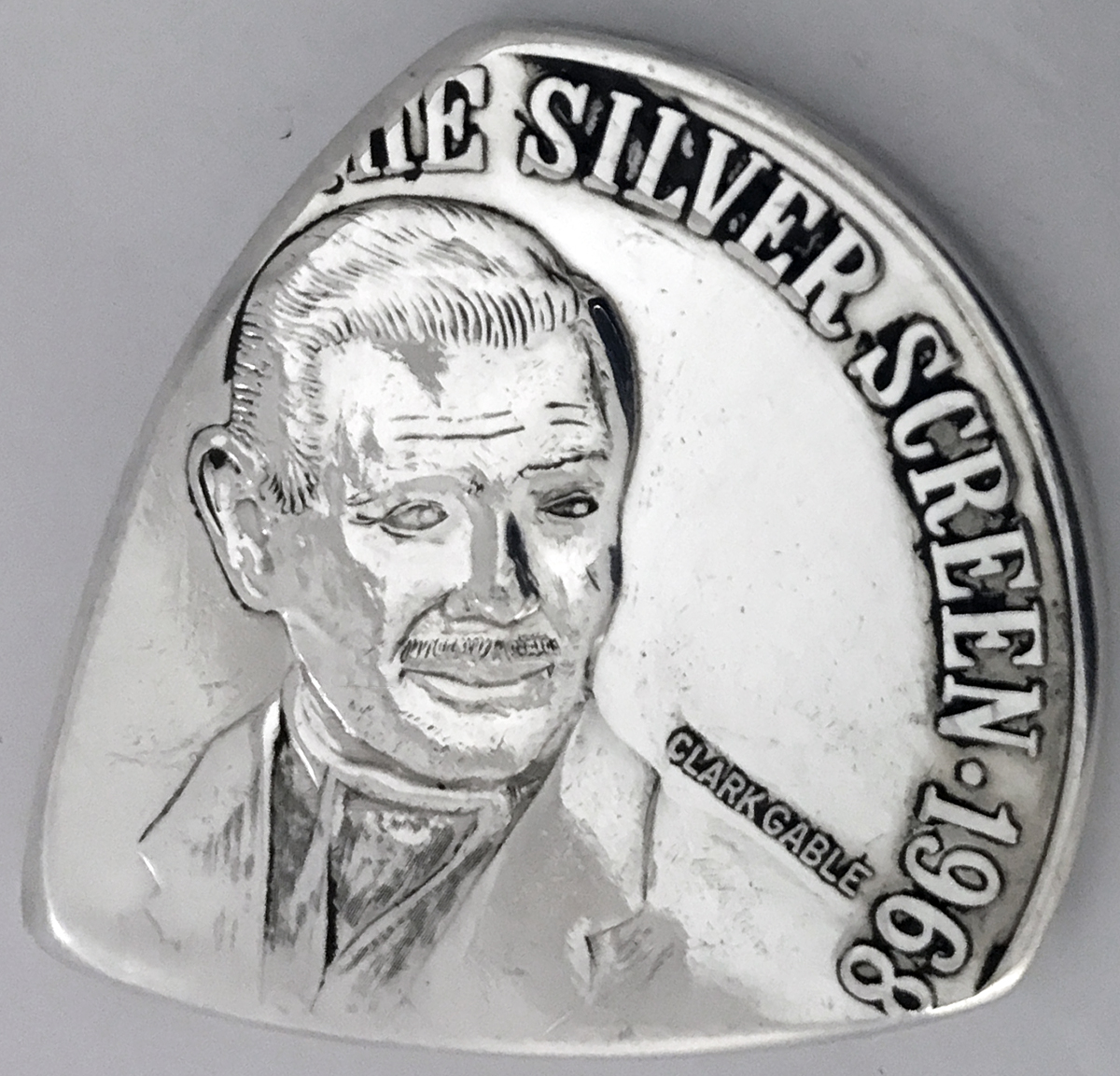
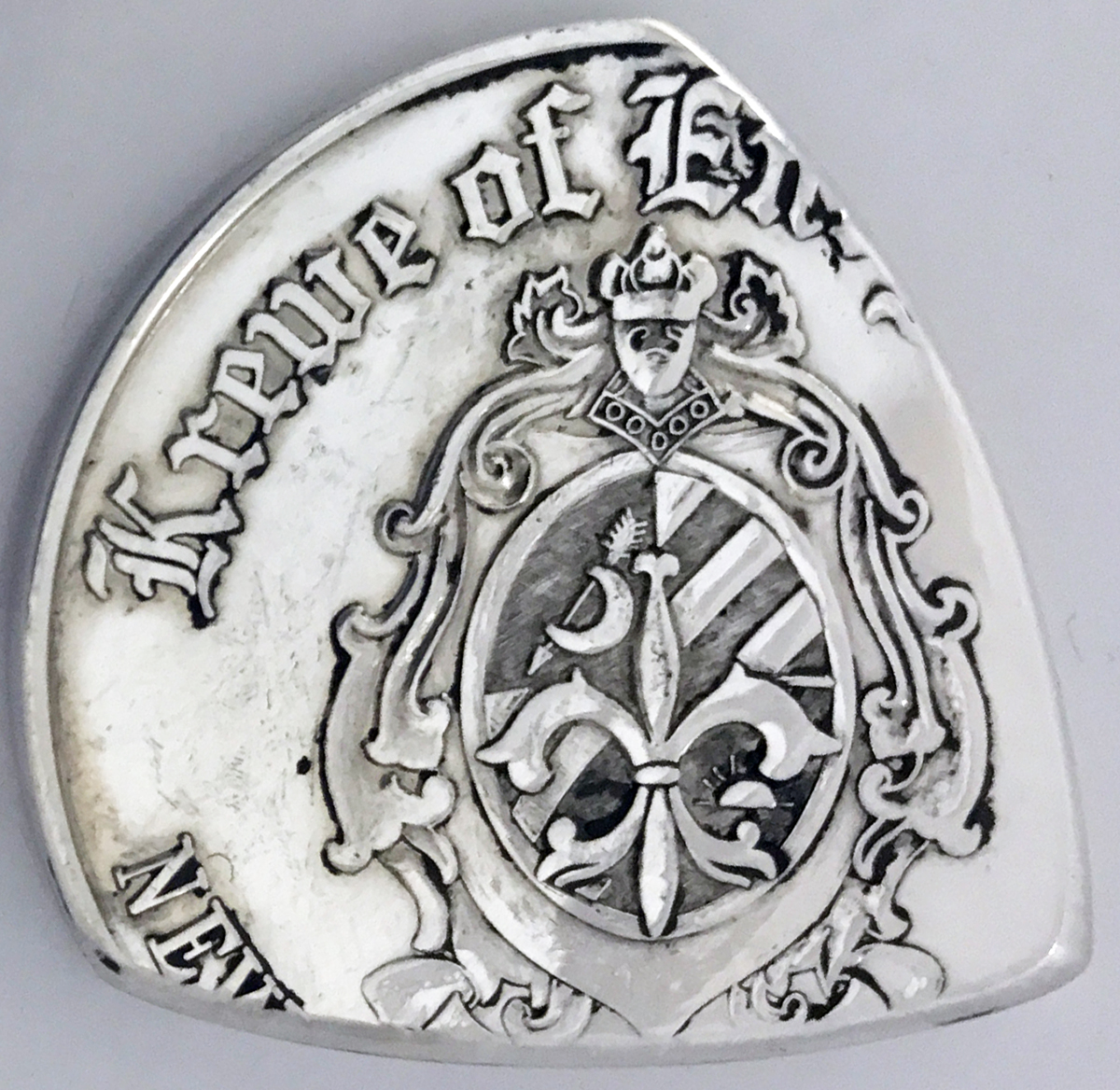
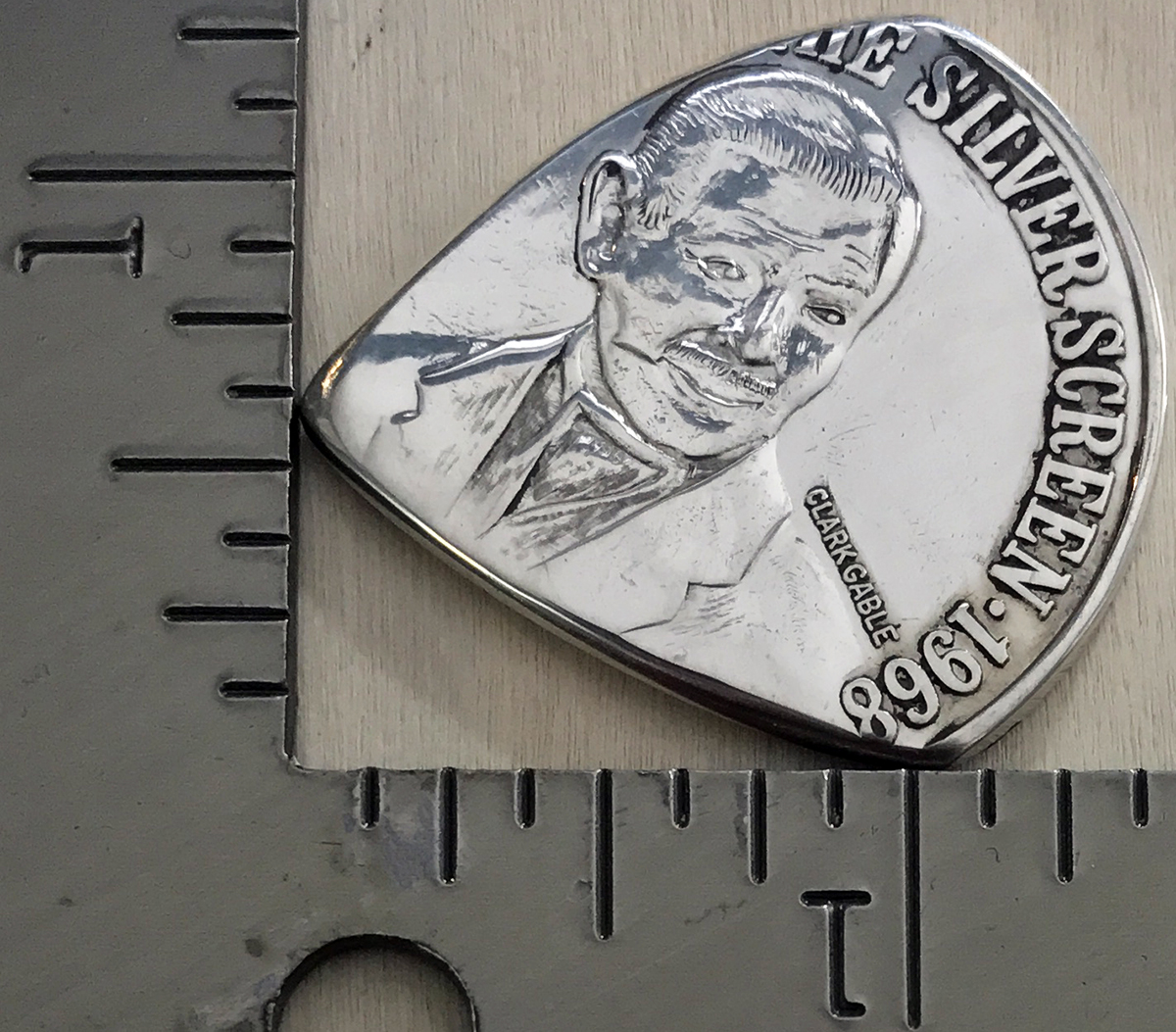



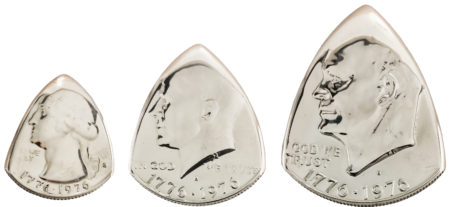
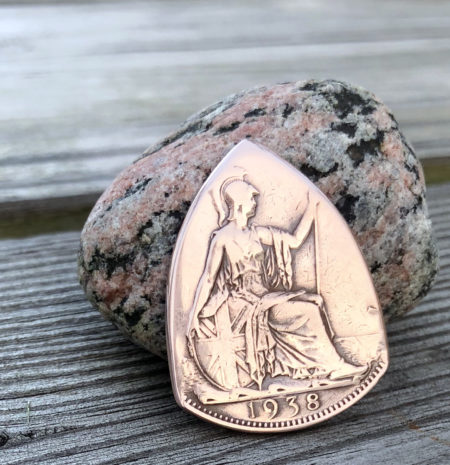
Reviews
There are no reviews yet.